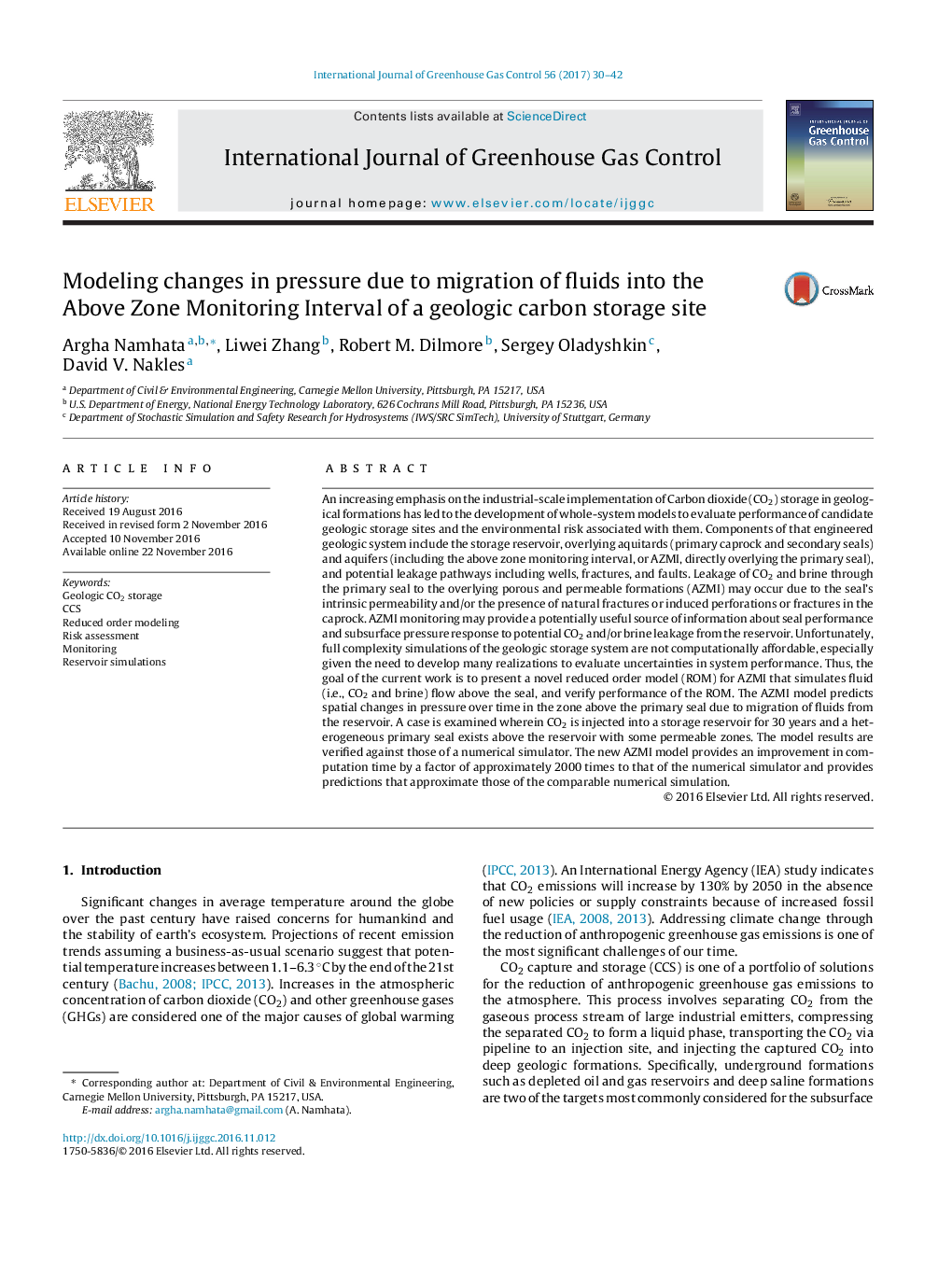| کد مقاله | کد نشریه | سال انتشار | مقاله انگلیسی | نسخه تمام متن |
|---|---|---|---|---|
| 5478883 | 1521963 | 2017 | 13 صفحه PDF | دانلود رایگان |
عنوان انگلیسی مقاله ISI
Modeling changes in pressure due to migration of fluids into the Above Zone Monitoring Interval of a geologic carbon storage site
ترجمه فارسی عنوان
مدل سازی تغییرات فشار در اثر مهاجرت مایعات به منطقه مانیتورینگ منطقه فوقانی یک سایت ذخیره سازی کربن زمین شناسی
دانلود مقاله + سفارش ترجمه
دانلود مقاله ISI انگلیسی
رایگان برای ایرانیان
کلمات کلیدی
موضوعات مرتبط
مهندسی و علوم پایه
علوم زمین و سیارات
فرآیندهای سطح زمین
چکیده انگلیسی
An increasing emphasis on the industrial-scale implementation of Carbon dioxide (CO2) storage in geological formations has led to the development of whole-system models to evaluate performance of candidate geologic storage sites and the environmental risk associated with them. Components of that engineered geologic system include the storage reservoir, overlying aquitards (primary caprock and secondary seals) and aquifers (including the above zone monitoring interval, or AZMI, directly overlying the primary seal), and potential leakage pathways including wells, fractures, and faults. Leakage of CO2 and brine through the primary seal to the overlying porous and permeable formations (AZMI) may occur due to the seal's intrinsic permeability and/or the presence of natural fractures or induced perforations or fractures in the caprock. AZMI monitoring may provide a potentially useful source of information about seal performance and subsurface pressure response to potential CO2 and/or brine leakage from the reservoir. Unfortunately, full complexity simulations of the geologic storage system are not computationally affordable, especially given the need to develop many realizations to evaluate uncertainties in system performance. Thus, the goal of the current work is to present a novel reduced order model (ROM) for AZMI that simulates fluid (i.e., CO2 and brine) flow above the seal, and verify performance of the ROM. The AZMI model predicts spatial changes in pressure over time in the zone above the primary seal due to migration of fluids from the reservoir. A case is examined wherein CO2 is injected into a storage reservoir for 30 years and a heterogeneous primary seal exists above the reservoir with some permeable zones. The model results are verified against those of a numerical simulator. The new AZMI model provides an improvement in computation time by a factor of approximately 2000 times to that of the numerical simulator and provides predictions that approximate those of the comparable numerical simulation.
ناشر
Database: Elsevier - ScienceDirect (ساینس دایرکت)
Journal: International Journal of Greenhouse Gas Control - Volume 56, January 2017, Pages 30-42
Journal: International Journal of Greenhouse Gas Control - Volume 56, January 2017, Pages 30-42
نویسندگان
Argha Namhata, Liwei Zhang, Robert M. Dilmore, Sergey Oladyshkin, David V. Nakles,
